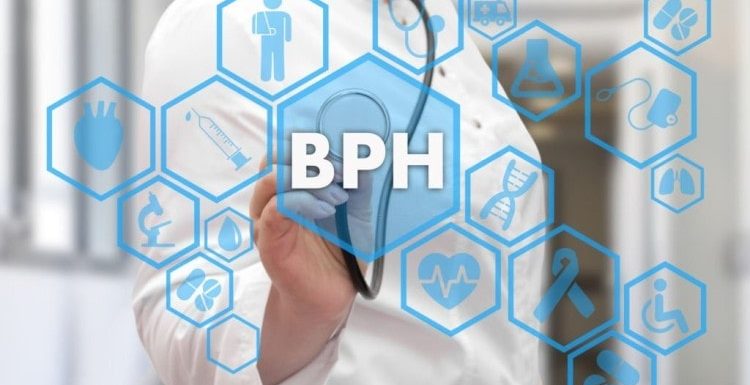
Benign Prostatic Hyperplasia (BPH) refers to the noncancerous enlargement of the prostate gland. As you’re probably aware, the prostate gland plays an important role in the male reproductive system, so medical conditions involving the prostate can be quite distressing. BPH is caused by hormonal changes that lead to the overgrowth of prostate cells. While it isn’t a life-threatening condition, it can significantly impact a man’s quality of life due to the urinary symptoms it presents. Consider this your guide to understanding BPH and its effects on men’s health.
The Basics of BPH
What is BPH? Also known as prostate gland enlargement, BPH occurs when the prostate grows in size and begins to put pressure on the urethra. This enlargement is a result of hormonal changes that typically happen with age. As men grow older, testosterone levels decrease, and estrogen levels increase.
This hormonal imbalance triggers the overgrowth of prostate cells, leading to the development of BPH. The exact cause of BPH is not fully understood, but age, family history, and hormonal imbalances are considered contributing factors.
Common Symptoms
BPH can cause a range of urinary symptoms that can significantly impact day-to-day living. The most common symptoms include increased urinary frequency, urinary urgency, and the sensation of incomplete bladder emptying. Men with BPH may also experience weak urine flow, difficulty initiating urination, and the need to strain during urination.
Nocturia, which is the need to wake up multiple times during the night to urinate, is another prevalent symptom. These symptoms can vary in severity, and their impact on daily activities can be significant.
Complications of BPH
While BPH itself is not a life-threatening condition, it can lead to multiple complications if left untreated. One of the primary complications is urinary tract infections (UTIs). When the urine remains in the bladder for extended periods due to poor bladder emptying, it creates a breeding ground for bacteria, increasing the risk of infection.
BPH can also cause bladder stones to form, which can lead to pain, urinary retention, and recurrent UTIs. Additionally, severe cases of BPH can result in bladder damage, kidney stones, and kidney damage, affecting overall kidney function.
Diagnosis
Diagnosing BPH typically involves a combination of medical history assessment, physical examination, and various tests. The healthcare provider will inquire about the patient’s urinary symptoms, medical history, and family history of prostate problems. A digital rectal examination (DRE) is performed to assess the size and condition of the prostate gland.
Additional tests may be conducted to rule out other conditions and evaluate the severity of BPH. These tests can include a prostate-specific antigen (PSA) blood test and urine flow studies.
Treatment Options
Treatment for BPH depends on the severity of symptoms and the impact that they have on the patient’s quality of life. For mild to moderate cases, lifestyle changes may be recommended. These can include avoiding caffeine and alcohol, managing fluid intake, and practicing bladder training exercises.
Medications such as alpha-blockers and 5-alpha reductase inhibitors can also help relax the muscles of the prostate gland and reduce its size.
In more severe cases, minimally invasive procedures like transurethral resection of the prostate (TURP) or laser therapy may be considered. Surgical intervention, such as prostatectomy, is reserved for cases that do not respond to other treatments.
Coping With BPH
Living with BPH can be challenging, but there are strategies that men can adopt to cope with the condition and improve their quality of life. Managing and limiting your fluid intake, particularly in the evening, can help reduce nighttime urination. Practicing pelvic floor exercises, also known as Kegel exercises, can strengthen the muscles around the prostate and improve bladder control.
It is essential to maintain regular follow-up appointments with healthcare providers to monitor the progression of the condition and make any necessary adjustments to the treatment plan. Vigilance is key to managing BPH.
Bottom Line
Understanding and managing BPH is essential for men as they age. By recognizing the causes, symptoms, and potential complications of the conditions, individuals can seek early diagnosis and effective treatment. With the right tactics, men can alleviate symptoms, minimize complications, and maintain a good quality of life despite living with BPH. It is crucial to prioritize ongoing monitoring and follow-up appointments to ensure the best possible management of the condition and overall well-being. By taking proactive steps, men can navigate the challenges of BPH and continue to enjoy a fulfilling and healthy life.
